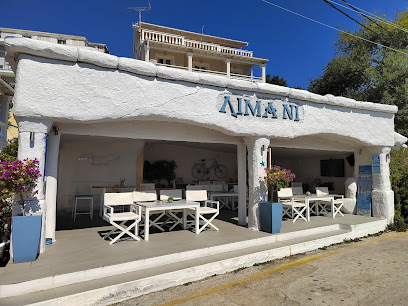
Butrint: A Journey Through Time
Discover Butrint National Park: A UNESCO World Heritage Site blending ancient history with Albania's stunning natural beauty.
Explore the ancient city of Butrint, a UNESCO World Heritage site in Albania, where Greek, Roman, Byzantine, and Venetian civilizations have left their mark. Wander through ruins nestled in a stunning natural landscape of forests, lakes, and the Ionian Sea, offering a unique blend of history and nature.
A brief summary to Butrint National Archaeological Park
- SH81, Butrint, AL
- +35542225068
- Visit website
Local tips
- Visit early in the morning or late afternoon to avoid crowds and the heat, especially during summer.
- Bring cash in Lek or Euro, as card payments may not be accepted everywhere.
- Allow at least 1.5 to 3 hours to explore the main monuments and enjoy the views.
- Wear comfortable shoes for walking on uneven paths and bring water, especially during hot weather.
- Check the bus schedule in advance if using public transport, as it may vary.
Getting There
-
Public Transport
From Saranda, the most common approach, take the bus departing near Friendship Park. Buses run approximately every 30 minutes from 7:30 AM to 7 PM, passing through Ksamil. The journey to Butrint takes 30-45 minutes and costs around 200 Lek. Pay the conductor on board.
-
Taxi
Taxis are available in Saranda near the port and main square. A taxi to Butrint costs approximately 4000-5000 Lek from Saranda. Negotiate the price before starting the journey and consider arranging a return trip.
-
Car
Drive south from Ksamil along the main road. A large parking lot is available near the entry gate. Parking is free, but can fill up quickly during peak season. Alternatively, continue south past Butrint to the Vivari Channel. A cable ferry (Transbordeur de Butrint) crosses the channel for 700 Lek per car. Pedestrians can ride for free.
Discover more about Butrint National Archaeological Park
Iconic landmarks you can’t miss
Forgotten house
2.0 km
Discover the historic charm of the Forgotten House in Ksamil, Albania, offering scenic views and a tranquil escape on the Ionian coast.
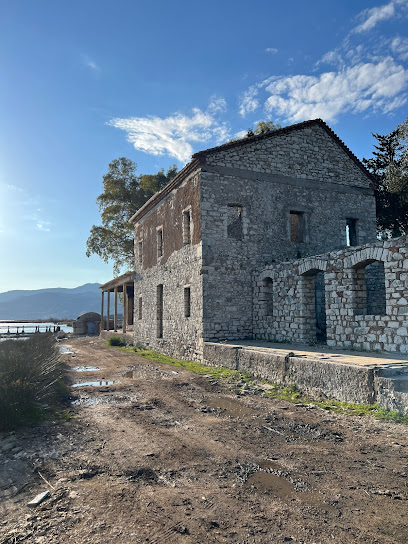
Grill Zone
2.9 km
Savor the flavors of Albania at Grill Zone, Ksamil's top destination for delicious grilled meats and a warm, inviting atmosphere.
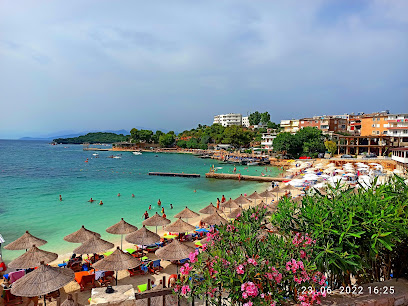
Camping Laerti & Glamping &Caravan
3.0 km
Explore the beauty of Ksamil at Camping Laerti, where nature meets comfort in the heart of Albania's stunning coastline.
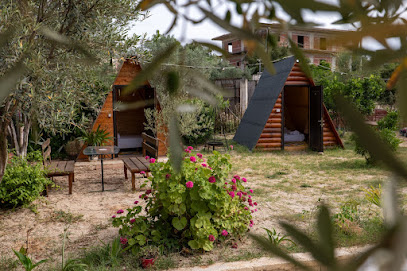
Ksamil Explore Office - Rental & Guides
3.1 km
Discover the beauty of Ksamil, Albania with expert guidance from Ksamil Explore Office - your gateway to adventure and unforgettable experiences.
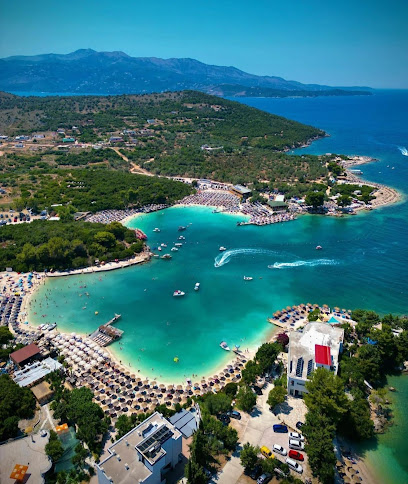
Karburant Eida Ksamil
3.1 km
Discover convenience and local hospitality at Karburant Eida Ksamil, the essential stop for travelers exploring the beauty of Albania.
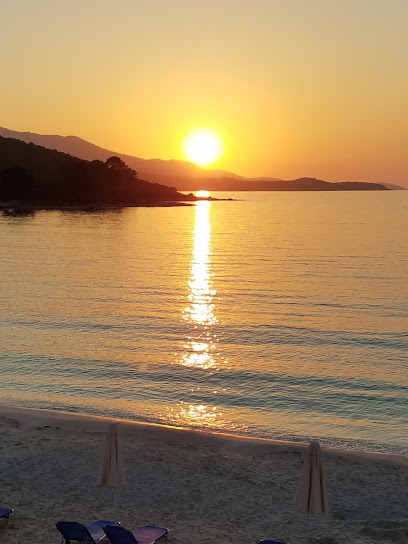
Apartments Juli Ksamil
3.1 km
Experience comfort and convenience at Apartments Juli Ksamil, your ideal base for exploring the beautiful beaches and attractions of Ksamil, Albania.
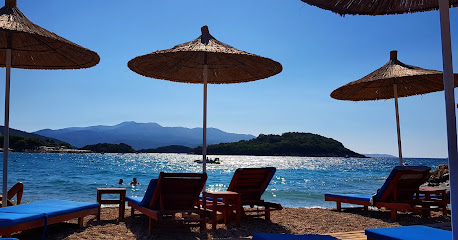
Papu Gyros
3.1 km
Discover the authentic taste of Albania at Papu Gyros in Ksamil, where fast food meets local flavors in a vibrant setting.
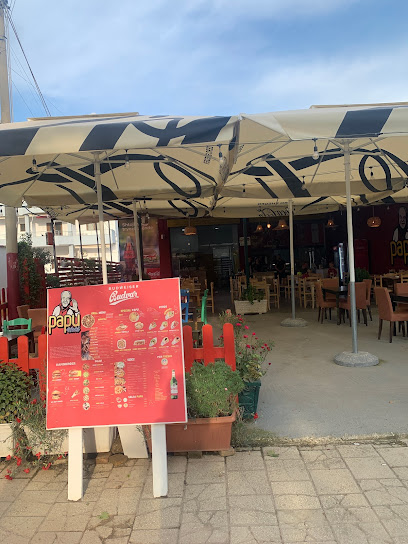
Rida Village Ksamil Island
3.2 km
Experience the enchanting Rida Village on Ksamil Island, where breathtaking views and exquisite dining create unforgettable memories.
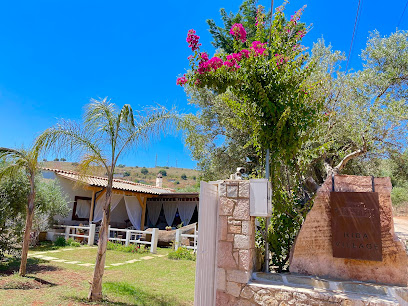
Ksamil Boat Tours - Trip
3.2 km
Explore the stunning coastline of Ksamil with exceptional boat tours, perfect for adventure seekers and nature lovers alike.

Traditional House
3.2 km
Savor the rich flavors of Albania at Traditional House, where traditional cuisine meets vibrant cocktails in the heart of Ksamil.
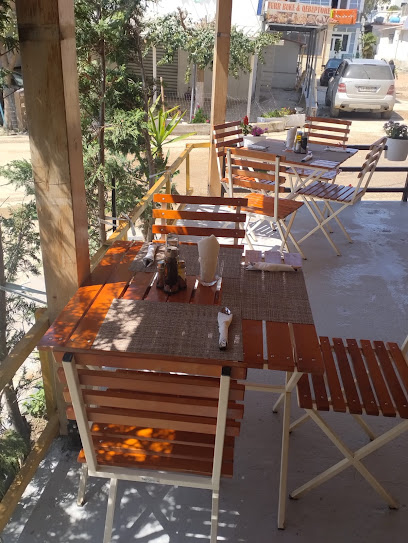
Villa August Ksamil
3.2 km
Experience comfort and convenience at Villa August Ksamil, your perfect base for exploring the stunning Albanian Riviera.
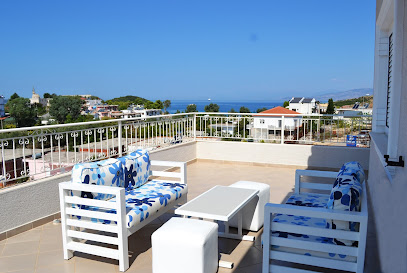
Plazhi Ksamil 9
3.2 km
Discover the stunning beauty of Plazhi Ksamil, a picturesque public beach in Albania, perfect for relaxation, swimming, and unforgettable sunsets.

Black Pearl Ksamil
3.3 km
Experience exquisite dining with breathtaking coastal views at Black Pearl Ksamil, a gem of the Albanian Riviera.

Villa Ujvara
3.3 km
Discover the serene charm of Villa Ujvara in Ksamil, Albania, where breathtaking views and warm hospitality create an unforgettable travel experience.

Book Ksamil office - Rental & Tours
3.4 km
Your gateway to unforgettable experiences in Ksamil, Albania. Expert guidance, rentals, and tours for exploring the Albanian Riviera.
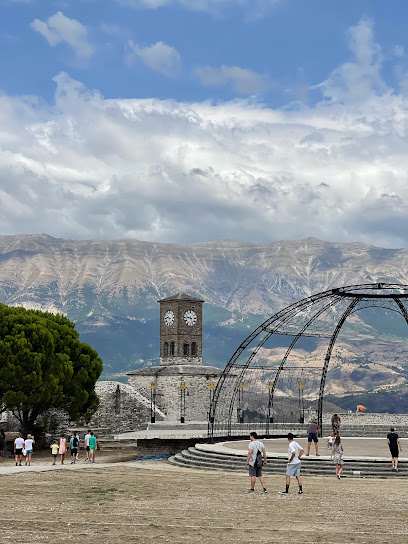
Unmissable attractions to see
Ancient Theatre
0.2 km
Discover the ancient artistry and breathtaking views at Butrint's iconic Ancient Theatre in Albania, where history and nature unite beautifully.
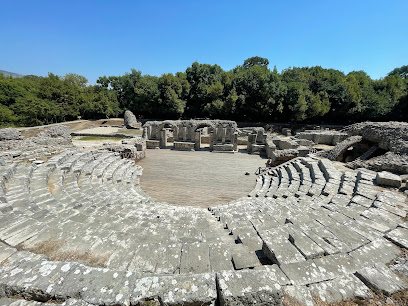
Trikonokosi Palace
0.2 km
Discover the Roman Villa of Trikonchos at Butrint National Park, Albania, with its mosaics, history, and scenic Ionian Sea views.
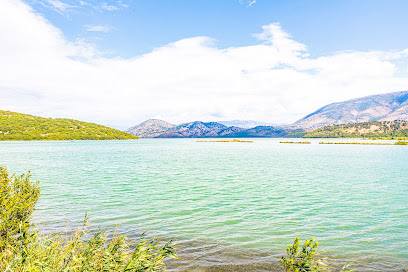
Venetian Castle
0.2 km
Explore the Venetian Castle in Butrint National Park: a historic fortress with panoramic views and archaeological treasures.
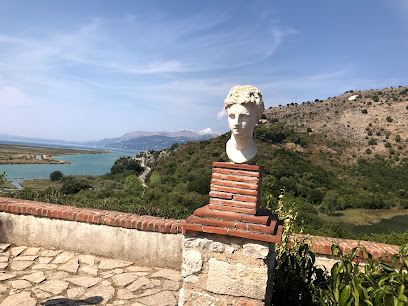
Butrint Museum
0.3 km
Explore the Butrint Museum, an archaeological gem in Albania, showcasing ancient artifacts and stunning landscapes of a UNESCO World Heritage Site.

Great Basilica
0.4 km
Discover the Great Basilica in Butrint, a stunning historical landmark steeped in ancient history and breathtaking mosaics.

Bay of Butrint
2.0 km
Discover the breathtaking beauty and rich history of the Bay of Butrint in Albania, a hidden gem along the stunning Albanian Riviera.
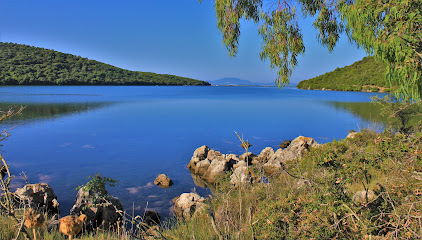
Ali Pasha's Castle
2.3 km
Explore Ali Pasha's Castle in Ksamil: a historic fortress offering stunning coastal views and a glimpse into Albania's rich past.
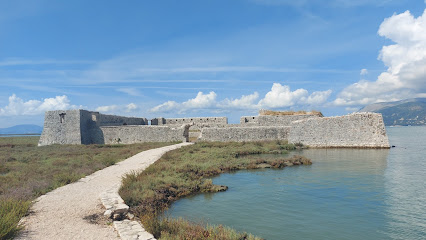
Kalivoj
2.5 km
Explore the untouched beauty of Kalivoj, a serene beach in Albania, perfect for relaxation and nature exploration.
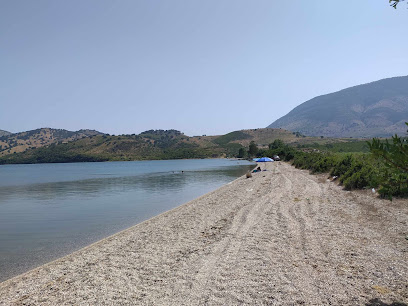
Mussel Sailing Tour with Food and Drink Tasting in Albania
2.9 km
Experience the best of Albanian cuisine and stunning coastal views on the Mussel Sailing Tour in Ksamil, a unique culinary adventure.

Ksamil
3.1 km
Discover the pristine beaches and vibrant culture of Ksamil, Albania, a hidden gem along the stunning Albanian Riviera.
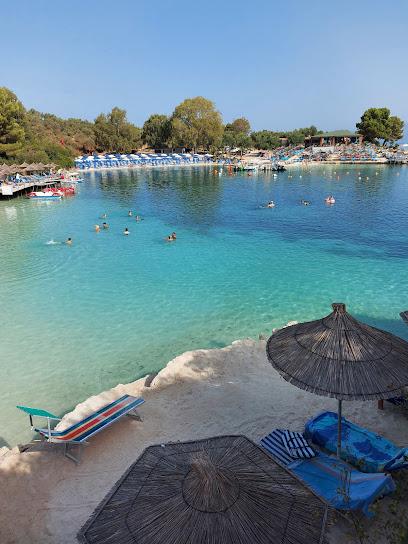
Plazhi Paradise
3.2 km
Discover the serene beauty of Plazhi Paradise in Ksamil, Albania, a stunning beach perfect for relaxation, adventure, and unforgettable memories.
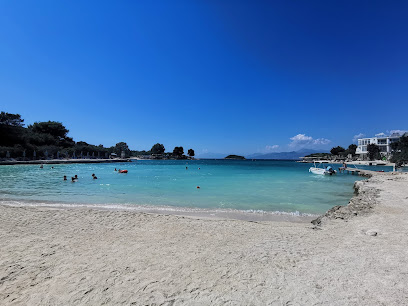
Ksamil beach
3.2 km
Discover the stunning beauty of Ksamil Beach, a hidden gem on the Albanian Riviera offering crystal-clear waters and vibrant local culture.
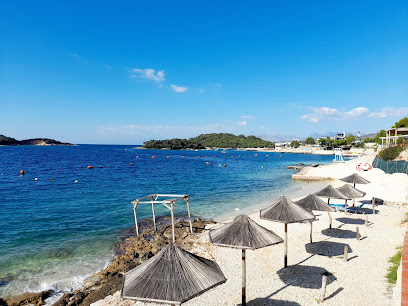
Paradise Beach
3.2 km
Discover the beauty of Paradise Beach in Sarandë, Albania, where golden sands and crystal-clear waters await your arrival.
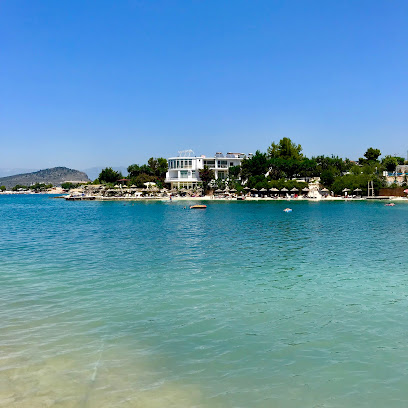
Lori Beach
3.3 km
Discover the serene beauty of Lori Beach in Ksamil, Albania – a perfect blend of sun, sand, and local culture awaits you.
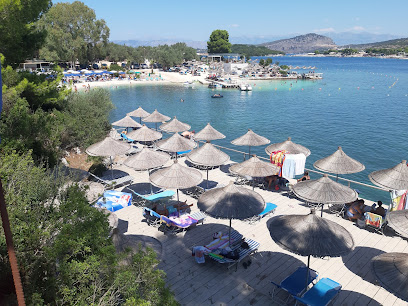
Boat trip Ksamil
3.3 km
Discover Ksamil's hidden beaches and turquoise waters with an unforgettable boat trip along the Albanian Riviera. Book your adventure today!

Essential places to dine
Blue Water Restaurant
2.9 km
Discover authentic Albanian cuisine at Blue Water Restaurant in Ksamil, where fresh seafood meets stunning coastal views.
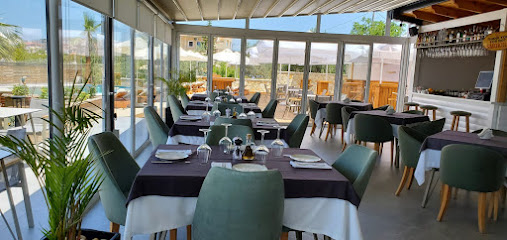
Restorant Korça
3.0 km
Experience authentic Albanian cuisine at Restorant Korça in Ksamil – where every meal is a celebration of local flavors and hospitality.
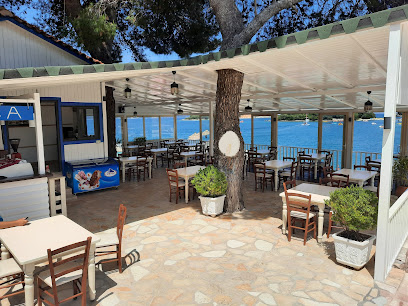
Moon Shine Restaurant & Pizza
3.1 km
Experience authentic Italian cuisine at Moon Shine Restaurant & Pizza in Ksamil – a delightful dining destination for food lovers.
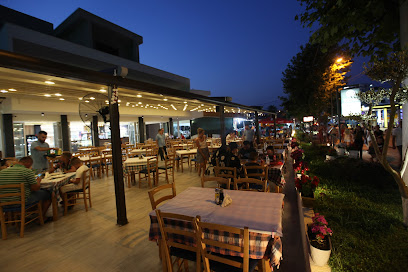
Restaorand Steakhouse Geri
3.1 km
Discover exquisite steaks and authentic Albanian flavors at Restaurant Steakhouse Geri in Ksamil, where exceptional service meets stunning coastal views.
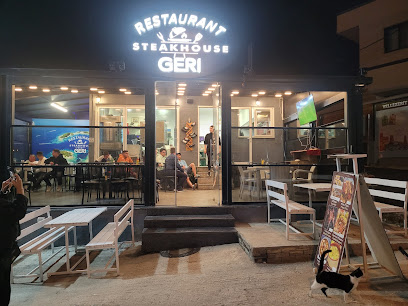
Denoel Beach Restaurant
3.2 km
Experience exquisite seafood and authentic Albanian cuisine at Denoel Beach Restaurant with stunning views of Ksamil's coastline.
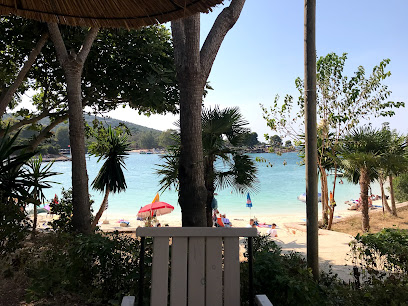
Bar Restorant Luna
3.2 km
Discover Bar Restorant Luna in Ksamil: A culinary haven offering traditional Albanian dishes with stunning views of the Riviera.

Taverna No Name
3.2 km
Experience authentic Albanian cuisine at Taverna No Name in Ksamil - where fresh seafood meets breathtaking coastal views.
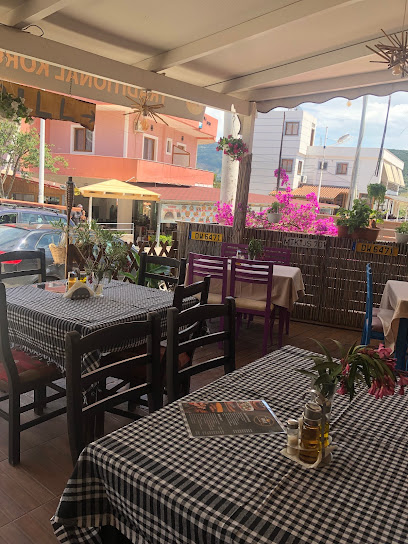
Restaurant Castle
3.2 km
Experience exquisite local cuisine with breathtaking views at Restaurant Castle in Ksamil, Albania - a must-visit culinary destination.
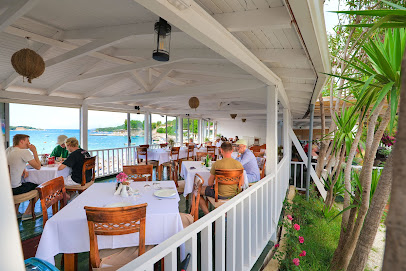
Family restaurant &grill
3.2 km
Discover the best of Albanian cuisine at Family Restaurant & Grill in Ksamil – where every meal tells a story.
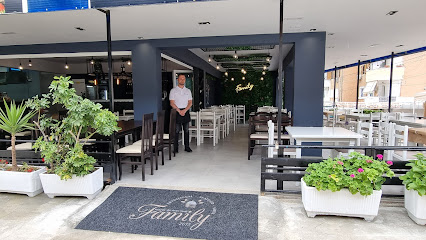
Restaurant Lori
3.2 km
Discover authentic Albanian cuisine at Restaurant Lori in Ksamil - where every meal is a delightful journey through local flavors.
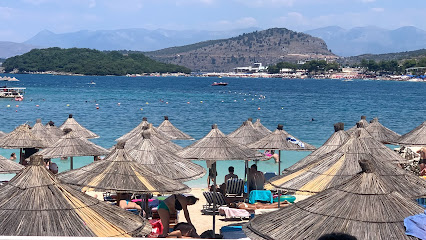
a`marino restaurant
3.3 km
Experience fresh seafood like never before at A'Marino Restaurant in Ksamil - where exquisite flavors meet breathtaking views.

Deti Jon Fish House
3.3 km
Discover fresh seafood delights at Deti Jon Fish House in Ksamil – where every bite tells a story of Albanian coastal cuisine.
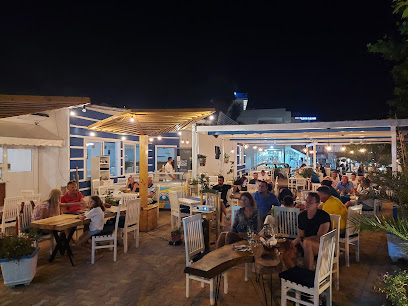
Bon Appetit Traditional Restaurant
3.4 km
Experience authentic Albanian flavors at Bon Appetit Traditional Restaurant in Ksamil - where tradition meets taste.

A Restaurant Ksamil
3.5 km
Experience authentic Albanian cuisine and delightful desserts at A Restaurant Ksamil in beautiful coastal Albania.
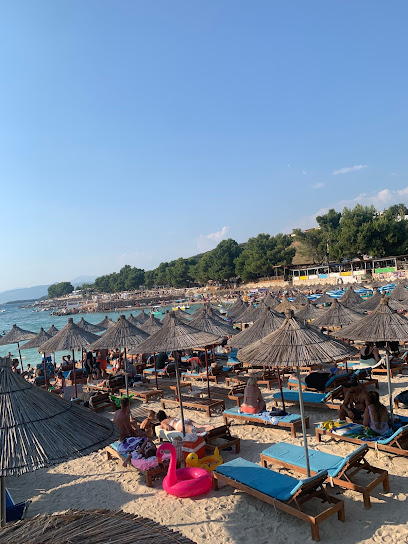
Pōda Restaurant Ksamil
3.5 km
Experience authentic Albanian cuisine with stunning views at Pōda Restaurant in beautiful Ksamil.
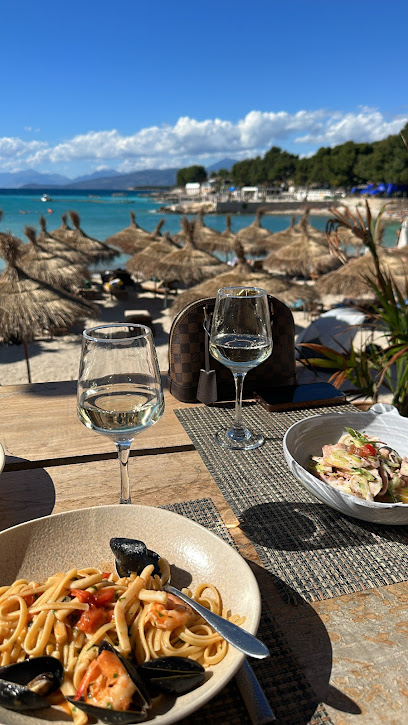
Markets, malls and hidden boutiques
Memaj Bakery & Pastry
3.0 km
Discover the delightful flavors of Albania at Memaj Bakery & Pastry in Ksamil, where fresh ingredients meet traditional baking.
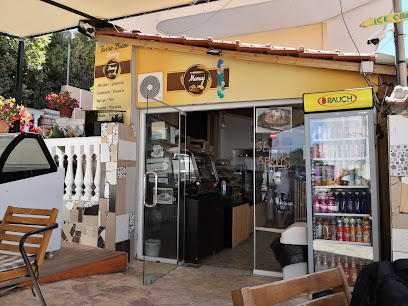
UNIQUE fashion butique & jewelry
3.1 km
Explore UNIQUE Fashion Boutique & Jewelry in Ksamil for stylish clothing and exquisite jewelry, showcasing the best of Albanian craftsmanship.

Joni Souvenirs
3.1 km
Explore authentic Albanian handicrafts and unique souvenirs at Joni Souvenirs in Ksamil, a must-visit for culture-loving travelers.
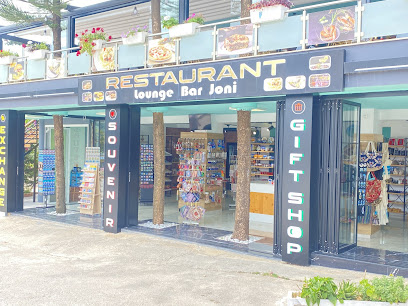
Souvenir Handmade Agur Kapo
3.1 km
Explore the vibrant artistry of Albania at Souvenir Handmade Agur Kapo, where every handcrafted piece tells a unique story.
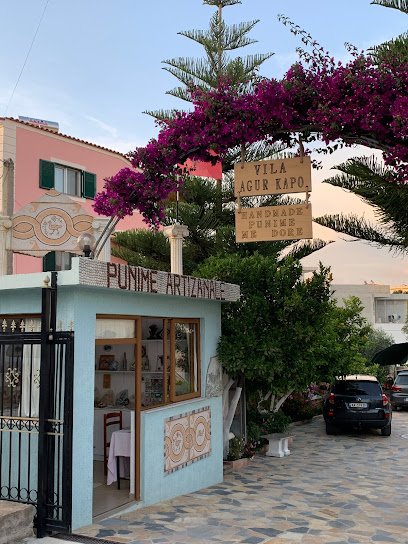
Beauty Salon Alda&Nilda
3.1 km
Experience luxury and relaxation at Alda&Nilda Beauty Salon in Ksamil, Albania - your ultimate retreat for beauty treatments and pampering.
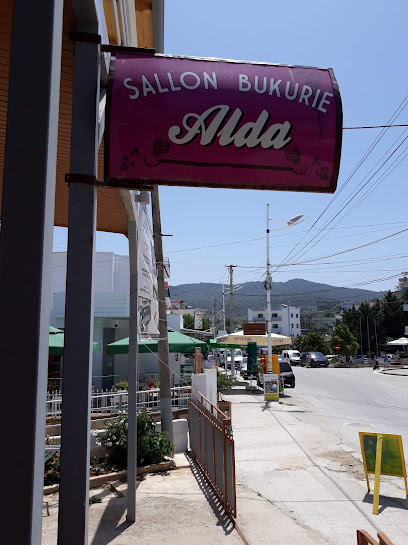
Fish Shop Butrint
3.2 km
Experience the freshest seafood and delightful fish and chips at Fish Shop Butrint in beautiful Ksamil, Albania.
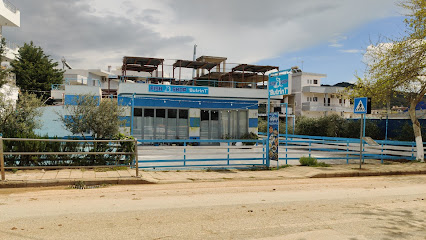
Hotel Ilio Boutique
3.2 km
Discover the beauty of Ksamil from Hotel Ilio Boutique, where comfort meets adventure in Albania's stunning coastal paradise.
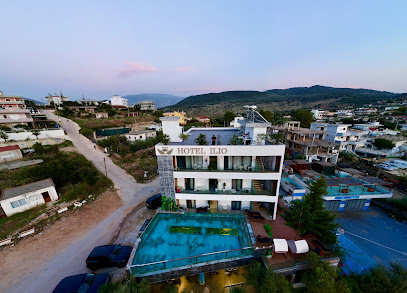
Sweet Corner
3.2 km
Discover Sweet Corner in Ksamil, Albania, where every dessert is a delightful adventure waiting to be savored.
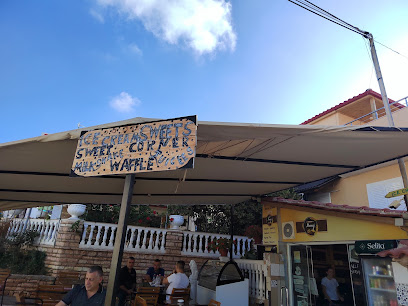
Supermarket Arta
3.2 km
Explore the vibrant local flavors and essentials at Supermarket Arta in Ksamil, your one-stop grocery destination in Albania.

Good Vibes Only Creperie&Pizza
3.2 km
Experience the best crêpes and pizzas in Ksamil at Good Vibes Only Creperie & Pizza, where delightful flavors meet a vibrant atmosphere.

Local Market
3.2 km
Experience the vibrant Local Market in Ksamil, where fresh produce, artisan crafts, and authentic Albanian flavors come together for an unforgettable visit.
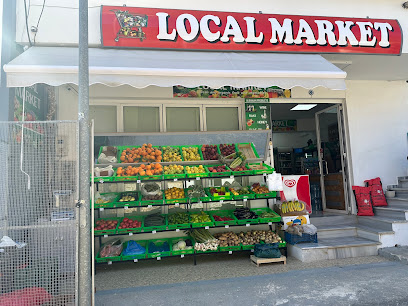
Traditional Albanian Souvenir
3.2 km
Explore handcrafted treasures reflecting Albania's rich culture at the Traditional Albanian Souvenir shop in Ksamil.

Triangolo Crepes & Waffles
3.3 km
Experience the ultimate indulgence in Ksamil at Triangolo Crepes & Waffles, where every bite is a celebration of flavor and creativity.
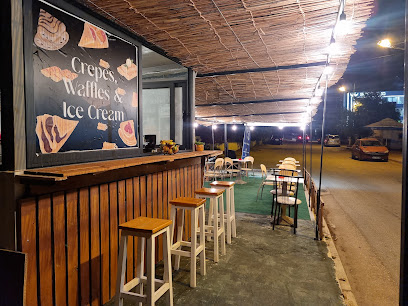
Spiaggia Ombrellone
3.3 km
Experience the sun-kissed beauty of Ksamil, Albania, at Spiaggia Ombrellone, your go-to beach clothing store for stylish summer essentials.
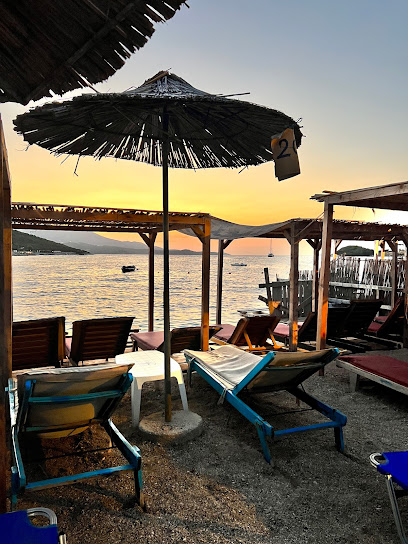
Barber Shop Lenci Ksamil
3.3 km
Experience top-notch grooming at Barber Shop Lenci in Ksamil, Albania, where skilled barbers and a welcoming atmosphere await you.

Essential bars & hidden hideouts
Foga Lounge
3.2 km
Discover the serene ambiance of Foga Lounge in Ksamil, offering exquisite drinks and a tranquil escape by the water.
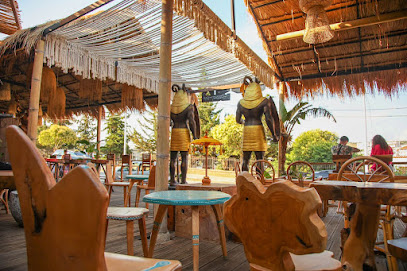
Just Simple
3.2 km
Discover the essence of Ksamil at Just Simple, a premier cocktail bar offering exquisite drinks in a vibrant atmosphere.
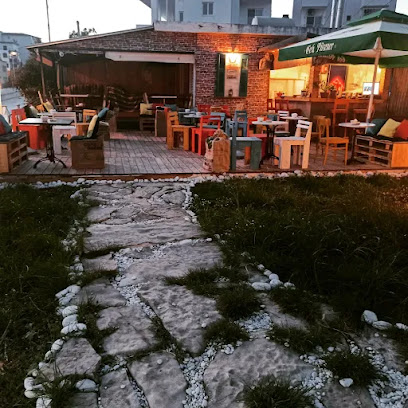
Bar-Lounge “Corner”
3.2 km
Unwind at Bar-Lounge 'Corner' in Ksamil, where exquisite cocktails meet a vibrant atmosphere and unforgettable experiences.

Vamosksamil
3.3 km
Experience the lively atmosphere and exceptional cocktails at Vamosksamil, Ksamil's premier bar for tourists seeking unforgettable nights.
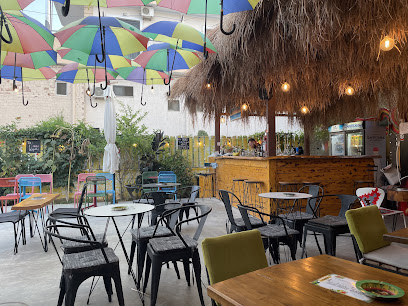
Vamos Cocktail Bar
3.3 km
Experience the vibrant nightlife at Vamos Cocktail Bar in Ksamil, where expertly crafted cocktails meet an energetic atmosphere.

Bar One
3.4 km
Experience the vibrant flavors of expertly crafted cocktails and delicious crepes at Bar One in beautiful Ksamil, Albania.

Corner Kiosk Cocktail Bar
3.4 km
Discover the vibrant charm of Corner Kiosk Cocktail Bar in Ksamil, where exquisite cocktails meet breathtaking coastal views.

Lounge Bar BERMUDA Ksamil
3.4 km
Experience the vibrant nightlife at Lounge Bar BERMUDA Ksamil, where stunning views meet signature cocktails and unforgettable moments.
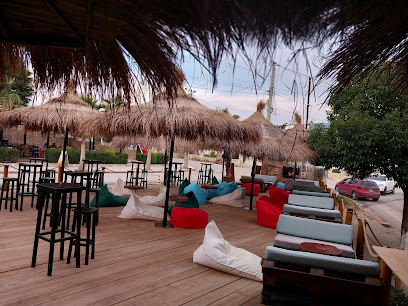
Chill out
3.5 km
Discover the enchanting ambiance of Chill Out Lounge in Ksamil, where relaxation meets exceptional service and delightful local flavors.

Poda Beach Bar
3.5 km
Discover the vibrant Poda Beach Bar in Ksamil, where refreshing drinks and stunning seaside views create the perfect getaway in Albania.

Augusti Beach Bar
3.6 km
Experience the tranquil charm of Augusti Beach Bar in Ksamil, where stunning views meet refreshing drinks and a serene atmosphere.
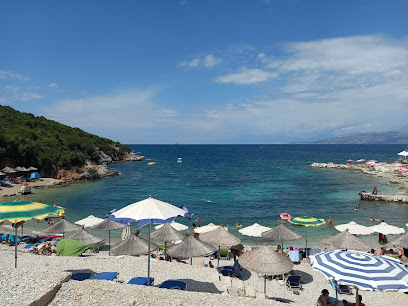
Beach Bar & Grill Reni & Risi
3.7 km
Experience the perfect blend of relaxation and culinary delight at Beach Bar & Grill Reni & Risi, Ksamil's ultimate beachside destination.
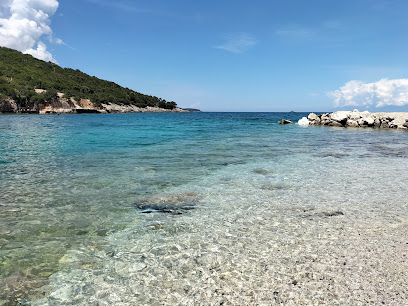
Bar Restauracja Utopia
4.1 km
Discover the vibrant nightlife and refreshing drinks at Bar Restauracja Utopia in beautiful Ksamil, Albania - a perfect blend of fun and relaxation.

Piko Beach Bar
4.2 km
Discover the vibrant atmosphere and stunning seaside views at Piko Beach Bar in Ksamil, Albania - the perfect spot to unwind and enjoy refreshing drinks.
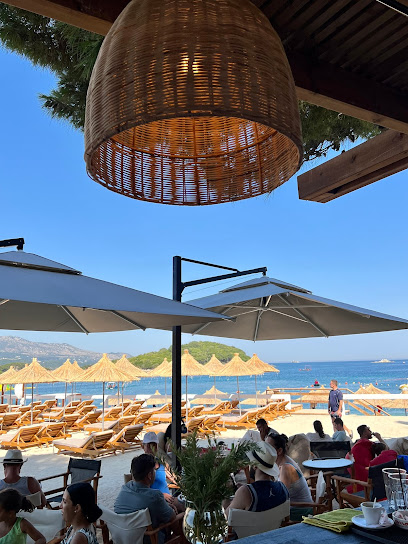
Limani
9.8 km
Discover Limani, Kassiopi's premier cocktail bar offering a delightful mix of refreshing drinks and breathtaking coastal views.
